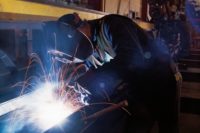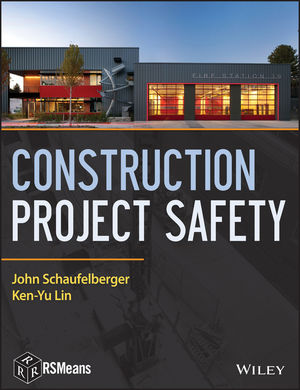 DuPont has adopted a new global corporate standard and developed stronger work requirements for hot work activities such as welding, cutting and grinding following a fatal hot work accident at the company’s Yerkes chemical facility in Buffalo, New York in 2010.
DuPont has adopted a new global corporate standard and developed stronger work requirements for hot work activities such as welding, cutting and grinding following a fatal hot work accident at the company’s Yerkes chemical facility in Buffalo, New York in 2010.
The Nov. 9 incident killed one contract worker and injured another.
A U.S. Chemical Safety Board (CSB) investigation found a number of deficiencies in the facility’s hot work permitting process and procedures that contributed to the accident. Contracted workers were welding atop a 10,000 gallon polymer slurry tank in a process area when hot sparks ignited flammable vinyl fluoride vapor that had accumulated inside the tank, triggering an explosion. The DuPont employee who signed the contractor’s hot work permit had no knowledge of the process to which the tank was connected or its associated hazards. Though the tank to be welded on was “locked out” from the process, an overflow line between adjacent tanks remained connected, allowing flammable vapor to accumulate inside the vessel where the welding was taking place.
In addition, the CSB found that despite National Fire Protection Association (NFPA) standards and industry best practices that call for testing the atmosphere inside tanks prior to conducting hot work, no internal tank monitoring was conducted.
CSB chairman Rafael Moure-Eraso commended DuPont for “fully embracing” four CSB recommendations stemming from the investigation.
DuPont’s standard “provides requirements and guidance to prevent injuries, loss of life, and property from fire or explosion as a result of hot work,” said Moure-Eraso.
DuPont's new standard
The CSB had urged DuPont to establish corporate policies and procedures requiring all facilities to audit their hot work permitting systems; isolate of process piping and similar connections prior to authorizing hot work; test for flammable gases inside containers prior to hot work; and require flammable gas monitoring during hot work in accordance with industry standards published by the NFPA.
DuPont’s new S31F standard requires that hot work permits be initiated and approved by individuals familiar with the scope of the work and associated hazards, and that both a job safety analysis and field audit be conducted prior to commencing work. The standard also requires isolating and removing energy sources from equipment where work is to be performed and sets up criteria for requiring either continuous or periodic flammable gas monitoring in the vapor spaces of process equipment and nearby containers during hot work operations.
Training and refresher training
Dr. Moure-Eraso also pointed out that DuPont’s new procedure was accompanied by a comprehensive rollout package that was distributed to all U.S. locations. DuPont conducted series of technical training sessions for its employees, and will provide periodic refresher training on a permanent basis. The new procedures require that hot work be avoided when possible – an inherently safer approach – and order that hot work be immediately discontinued if flammable gases reach a level of 10% of the lower explosive limit (LEL), as determined by gas monitoring equipment.
“We see far too many preventable accidents involving hot work in flammable atmospheres around tanks,” Dr. Moure-Eraso said. “DuPont’s new procedures are a sound model for other companies, large and small, to emulate and should inform future regulatory developments in this area.” Most recently, in 2012 the CSB sent an investigative team to the Long Brothers oil well site in Arkansas, where three workers were fatally burned in a hot work accident while dismantling an oil tank. No combustible gas monitoring was conducted, CSB investigators found
"Company moved decisively"
“DuPont addressed all of our recommended changes in issuing its new corporate standard S31F,” said Chairperson Moure-Eraso. “The company moved decisively after this tragic accident to institute detailed requirements for hot work which will decrease the likelihood of similar hot work accidents at DuPont facilities, and which other companies may wish to emulate.”
After examining a series of hot work accidents, the CSB released a report entitled “Seven Key Lessons to Prevent Worker Deaths During Hot Work in and around Tanks.” The CSB safety video “Hot Work: Hidden Hazards” examines the DuPont accident in Buffalo utilizing 3D animation.








